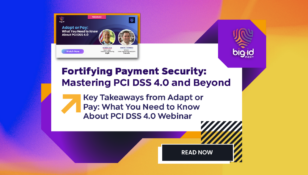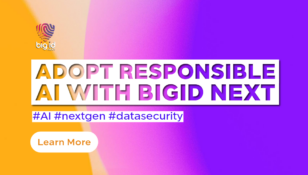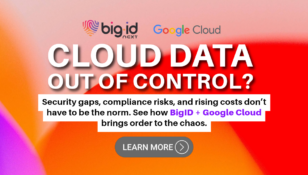Data Risk Management: Scope, Assessment, and Strategy

Understanding the Scope of Data Risk Management
Data is the one unavoidable constant in every modern business— so it’s no surprise that managing data risk has become a paramount concern for organizations worldwide. Data risk management involves identifying, assessing, and mitigating potential risks to sensitive data, ensuring its confidentiality, integrity, and availability. With the proliferation of data breaches and cyber threats, understanding and implementing effective data risk management strategies is crucial to safeguarding valuable information assets.
What is Data Risk Management?
Data risk management encompasses the processes, policies, and technologies employed to protect sensitive data from unauthorized access, disclosure, alteration, or destruction. It involves assessing the potential threats to data security and implementing measures to mitigate these risks.
Why is Data Risk Management Important?
The importance of data risk management cannot be overstated. Data breaches can result in significant financial losses, reputational damage, and legal repercussions for organizations. According to IBM’s Cost of a Data Breach Report 2021, the average cost of a data breach globally was $4.24 million. Beyond financial losses, breaches erode customer trust and confidence, leading to long-term implications for business viability.
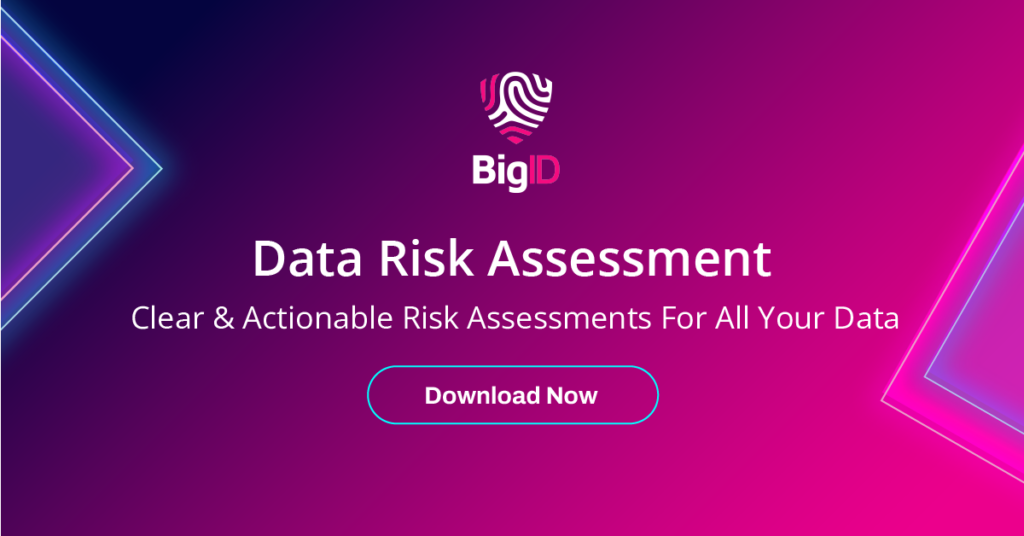
Common Data Risk Challenges
Data risk look different across organizations and various industries but there are some common pitfalls to watch out for like:
- Lack of Awareness: Many organizations underestimate the importance of data risk management or fail to recognize the full extent of their data exposure.
- Complexity of Data Ecosystems: With the proliferation of data sources and technologies, organizations struggle to effectively manage and secure their data across diverse platforms and environments.
- Insider Threats: Malicious or negligent actions by employees pose a significant risk to data security, highlighting the need for robust access controls and monitoring mechanisms.
- Evolving Threat Landscape: Cyber threats are constantly evolving, making it challenging for organizations to keep pace with emerging risks and vulnerabilities.
Identifying and Mitigating Data Security Risks
- Conduct Data Security Assessment: Regularly assess your organization’s data security posture to identify vulnerabilities and gaps in existing controls. This may involve penetration testing, vulnerability scanning, and security audits.
- Implement Access Controls: Enforce the principle of least privilege to restrict access to sensitive data only to authorized individuals. Use authentication mechanisms such as multi-factor authentication (MFA) to enhance access security.
- Encrypt Sensitive Data: Implement encryption techniques to protect data both at rest and in transit. Encryption helps safeguard data from unauthorized access even if perimeter defenses are breached.
- Deploy Data Loss Prevention (DLP) Solutions: Utilize DLP solutions to monitor and prevent the unauthorized transmission of sensitive data outside the organization’s network perimeter.
- Educate Employees: Train employees on data security best practices, such as recognizing phishing attempts, safeguarding passwords, and securely handling sensitive information.
Types of Data Security Risks & Threats
In the realm of data risk management, organizations face a myriad of threats that can have significant and far-reaching impacts on their operations, reputation, and bottom line. Some of the most impactful threats include:
- External Threats: These include cyberattacks such as malware, ransomware, phishing, and DDoS attacks launched by external malicious actors.
- Insider Threats: Threats originating from within the organization, including employees, contractors, or business partners, who intentionally or unintentionally compromise data security.
- Third-party Risks: Risks associated with outsourcing data processing or storage to third-party vendors or cloud service providers, which may introduce vulnerabilities into the organization’s data ecosystem.
Laws and Frameworks for Data Protection
- General Data Protection Regulation (GDPR): Enforced by the European Union, GDPR mandates strict requirements for the protection of personal data and imposes severe penalties for non-compliance.
- California Consumer Privacy Act (CCPA): Similar to GDPR, CCPA grants California residents rights over their personal information and imposes obligations on businesses handling such data.
- ISO/IEC 27001: A widely recognized international standard for information security management systems (ISMS), providing a framework for establishing, implementing, maintaining, and continually improving data security practices.
Cloud Data Risk Management
With the increasing adoption of cloud computing, organizations are turning to cloud data risk management software solutions to secure their data assets in the cloud. These solutions offer features such as encryption, access controls, data loss prevention, and threat detection tailored for cloud environments.
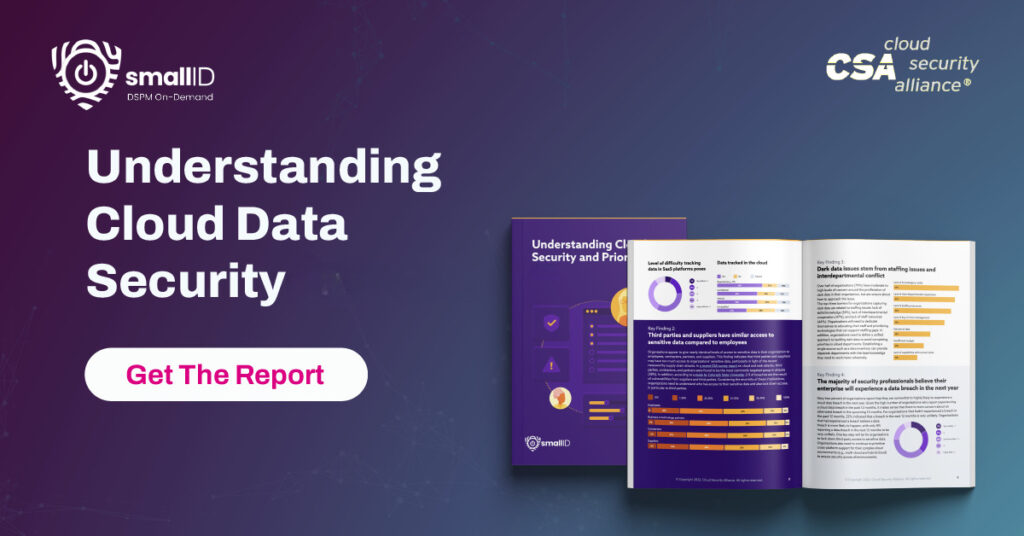
Prioritizing Data Risk Assessments
Conducting a data risk assessment is a critical step in understanding and mitigating potential risks to sensitive data within an organization. Here’s a structured approach organizations can follow to conduct a comprehensive data risk assessment:
1. Define Scope and Objectives:
- Clearly define the scope of the assessment, including the systems, processes, and types of data to be evaluated.
- Establish clear objectives for the assessment, such as identifying vulnerabilities, assessing the effectiveness of existing controls, and prioritizing risk mitigation efforts.
2. Identify Assets and Data Flows:
- Identify all assets within the organization that store, process, or transmit sensitive data, including hardware, software, databases, and cloud services.
- Map the flow of data across the organization, documenting how data moves between systems, departments, and external entities.
3. Identify Threats and Vulnerabilities:
- Identify potential threats to data security, including cyber threats (e.g., malware, phishing), insider threats, physical security risks, and compliance violations.
- Identify vulnerabilities in systems, applications, and processes that could be exploited by threat actors to compromise data integrity, confidentiality, or availability.
4. Assess Current Controls:
- Evaluate the effectiveness of existing security controls and safeguards in place to protect sensitive data, such as access controls, encryption, monitoring tools, and incident response procedures.
- Identify gaps or weaknesses in existing controls that may leave the organization vulnerable to data breaches or other security incidents.
5. Analyze Risks:
- Assess the likelihood and potential impact of identified threats exploiting vulnerabilities to compromise sensitive data.
- Use risk assessment methodologies, such as qualitative or quantitative risk analysis, to prioritize risks based on their severity and likelihood.
6. Determine Risk Tolerance:
- Define the organization’s risk tolerance level based on its business objectives, regulatory requirements, and risk appetite.
- Determine acceptable levels of risk for different types of data and business processes, considering factors such as sensitivity, criticality, and legal obligations.
7. Develop Risk Treatment Plans:
- Develop risk treatment plans to address identified risks, including risk mitigation, risk transfer, risk avoidance, or risk acceptance strategies.
- Prioritize risk treatment efforts based on the severity and likelihood of risks, available resources, and organizational priorities.
8. Implement Controls and Monitoring:
- Implement recommended controls and mitigation measures to reduce the likelihood and impact of identified risks.
- Establish mechanisms for monitoring and evaluating the effectiveness of implemented controls over time, adjusting strategies as needed based on changing threats and vulnerabilities.
9. Document and Communicate Findings:
- Document the results of the data risk assessment, including identified risks, recommended controls, and risk treatment plans.
- Communicate findings to relevant stakeholders, including senior management, IT teams, data owners, and regulatory authorities as required.
10. Review and Update Regularly:
- Regularly review and update the data risk assessment process to reflect changes in the organization’s environment, technology landscape, and regulatory requirements.
- Conduct periodic reassessments to ensure ongoing effectiveness of controls and alignment with business objectives.
The Impact of AI on Data Risk Management
The rapid adoption of artificial intelligence (AI) has revolutionized data risk management by enabling organizations to enhance threat detection, automate security processes, and analyze vast amounts of data for anomalies and patterns indicative of potential risks. AI-powered solutions can augment human capabilities, providing real-time insights into emerging threats and helping organizations stay one step ahead of cyber adversaries.
Reducing and Mitigating Data Risk with BigID
Data risk management is essential for safeguarding sensitive information and protecting organizations from the devastating consequences of data breaches. BigID is the industry leading platform for data privacy, security, compliance, and AI data management, leveraging advanced AI and machine learning to give businesses the visibility into their data they need.
With BigID you can:
- Know Your Data: Automatically classify, categorize, tag, and label sensitive data with unmatched accuracy, granularity, and scale.
- Improve Data Security Posture: Proactively prioritize and target data risks, expedite SecOps, and automate DSPM.
- Reduce Your Attack Surface: Shrink the attack surface by proactively eliminating unnecessary, non-business critical sensitive data.
- Remediate Data Your Way: Centrally manage data remediation – delegate to stakeholders, open tickets, or make API calls across your stack.
- Enable Zero Trust: Reduce overprivileged access & overexposed data, and streamline operations.
Be proactive with your data security approach— get a 1:1 demo with our experts today.




